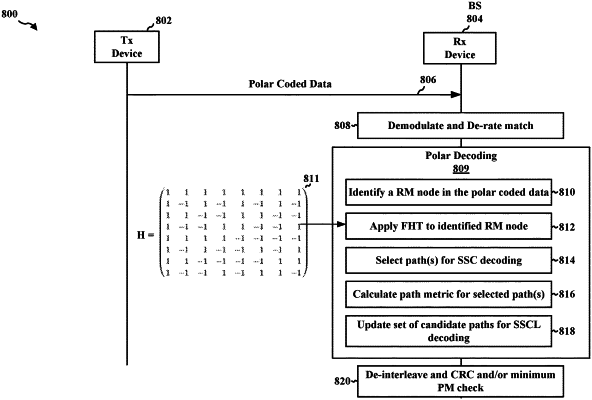| CPC H04L 1/0057 (2013.01) [H03M 13/13 (2013.01); H04B 1/7093 (2013.01); H04L 1/0041 (2013.01); H04B 2001/70935 (2013.01)] | 30 Claims |

|
1. A first wireless device for wireless communication, comprising:
a memory; and
at least one processor coupled to the memory, wherein the processor is configured to:
receive a polar-encoded transmission comprising at least one intermediate node associated with a first configuration of frozen leaf nodes and information leaf nodes;
apply a Fast Hadamard Transform (FHT) to a first set of values associated with a first intermediate node of the at least one intermediate node to generate a second set of values associated with the first intermediate node;
select, based on the second set of values, one or more paths associated with the first intermediate node for a simplified successive cancellation list (SSCL) decoding;
calculate a path metric for each of the selected one or more paths associated with the first intermediate node; and
identify a path in the one or more paths based on the calculated path metric for each of the selected one or more paths associated with the first intermediate node, wherein the path is indicative of decoded data corresponding to the polar-encoded transmission.
|